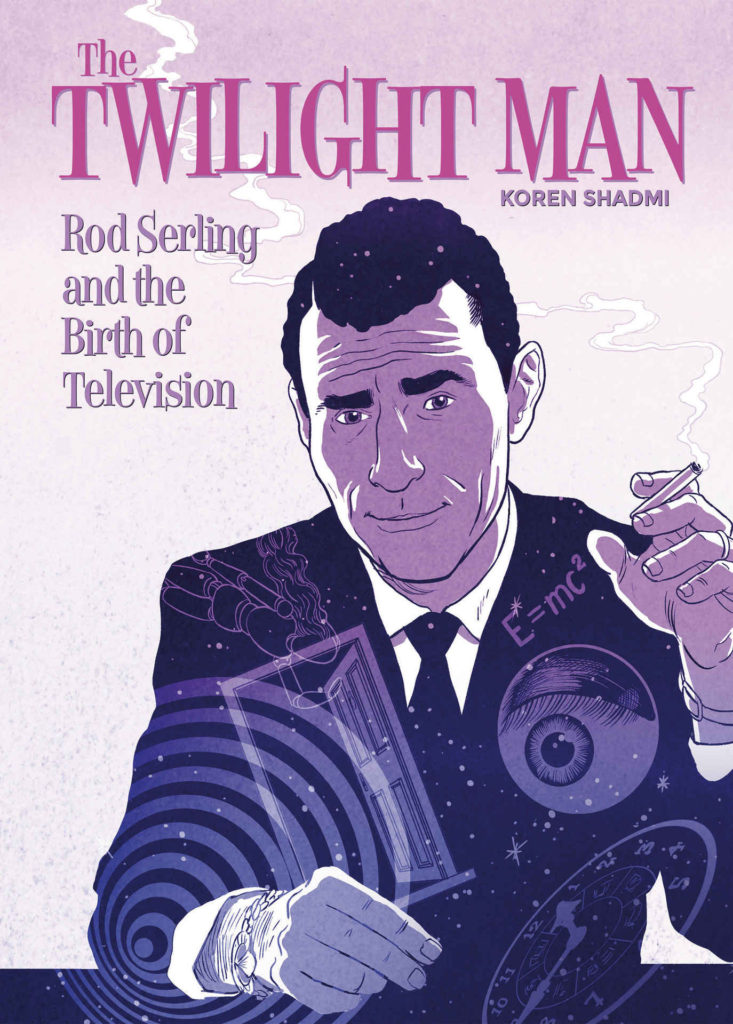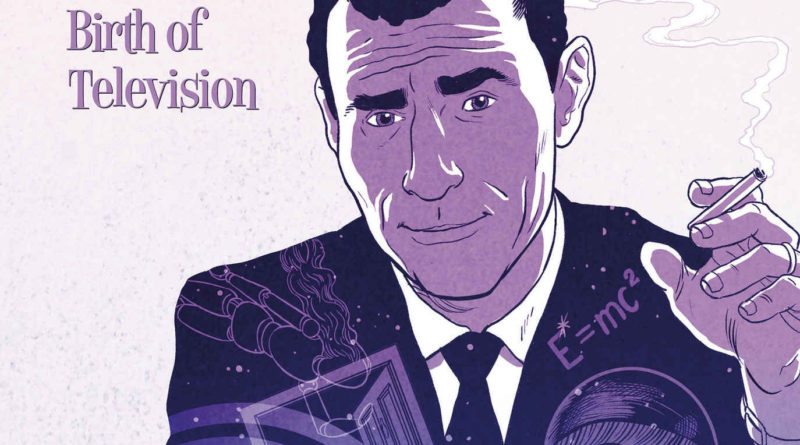INTERVIEW: Celebrate 60 years of ‘Twilight Zone’ with new Serling biography
Image courtesy of Humanoids / Provided by Superfan Promotions with permission.
“You’re traveling through another dimension, a dimension not only of sight and sound but of mind.”
If these words are even vaguely familiar, there’s a good chance you will enjoy reading Twilight Man: Rod Serling and the Birth of Television, a new illustrated biography of the host and creator of The Twilight Zone. The original TV series is celebrating 60 years this year, and Humanoids recently released Koren Shadmi’s exploration of the life and legacy of the TV trend-setter.
The Twilight Zone is one of the most influential series of all time, eventually spawning reboots, books and a movie. The original set of episodes aired from 1959 to 1964 and included a series of simple, but effective plots that spoke to the Cold War, the fear of Communists in the United States and the so-called Atomic Age. Classic episodes like “Eye of the Beholder,” “Time Enough at Last,” “The Monsters Are Due on Maple Street” and “Nightmare at 20,000 Feet” entered the cultural zeitgeist and helped define tropes for horror, sci-fi and mystery.
Shadmi, who teaches at The School of Visual Arts in New York, is the author of Rise of The Dungeon Master: Gary Gygax and The Creation of D&D, with David Kushner. His work has also appeared in The New York Times, The New Yorker and other publications.
Recently Hollywood Soapbox exchanged emails with Shadmi about Twilight Man: Rod Serling and the Birth of Television. Questions and answers have been slightly edited for style.
What made you want to create and develop a biography of Rod Serling?
I was introduced to The Twilight Zone late in life and felt a strong connection between some of the episodes and my own work. I was curious about the life of the show’s enigmatic creator/writer/presenter. The idea took awhile to come to fruition, and when I was looking for my next graphic novel, I finally took the time to read about him and was blown away. I did not know that he was such an important figure in the world of early television. He had written some very important teleplays such as Patterns and Requiem for a Heavyweight. I was also fascinated by his war time stories and what he had to go through at such a young age.

How long have you have been a fan of The Twilight Zone?
Not that long! But I feel very passionate about the show. I think it was a groundbreaking show that paved the way for a lot of creators who were incredibly influenced by Serling and his works.
What do you think made Serling’s TV work so interesting and fascinating to viewers?
I think he was a true writer who aimed high with everything he wrote; with his early work, he approached these teleplays as if they were made for the stage. This aesthetic lives on in The Twilight Zone, and that’s why some episodes feel almost like short art films.
How did you develop the artistic style for this biography?
I wanted the drawings to be fairly realistic, so they would seamlessly transition from the quoted episodes and into the ‘real world’ of the comic. But I also didn’t want it too look overly realistic because that can cause drawings to get wooden.
You have told the behind-the-scenes stories of Dungeons & Dragons before. What do you like best about these types of biographies?
I think graphic novels are a very accessible and digestible form to absorb stories of any kind, and it’s a gateway for someone who might not commit to a 500-page biography to learn about someone’s life.
By John Soltes / Publisher / John@HollywoodSoapbox.com
Twilight Man: Rod Serling and the Birth of Television, by Karen Shadmi, is now available from Humanoids. Click here for more information.

